In the days gone by when it came to buying a Horse, being able to tell a horse’s age by looking at their teeth was not only a useful skill but a necessary one. When buying stock from fairs and marts, the horses of yester year did not always come with a passport, therefore, you needed to be able to have an idea of how old the animal was by looking at its teeth. No doubt there are Equestrians that are very good at this skill, but in any case we are going to provide you with a few Tips so that you too can add this new skill to Equestrian Tool Box.
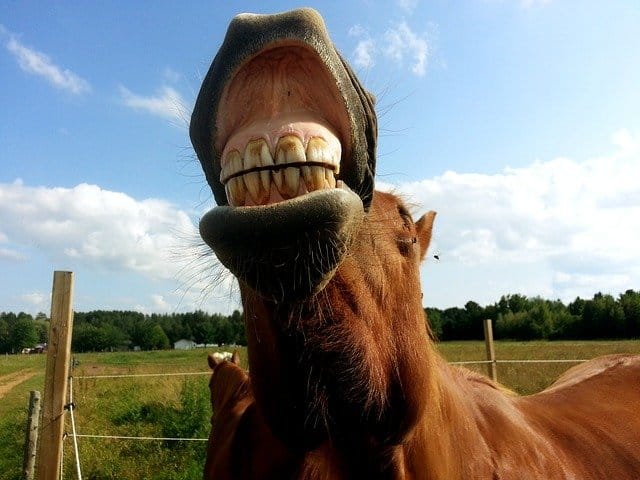
How Many Teeth Has a Adult Horse
The adult horse has 12 molars in each jaw, and 6 Incisors. The Male will also have 2 canines in each jaw, (occasionally mares will have canines, but this does not always occur). That gives a total of 40 teeth in the Adult male horse and 36 in the Adult Female. There can be a presence of other teeth known as Wolf Teeth, which are a throwback to teeth from an older period in the horse’s evolution. They can number 2 in each jaw directly up against the first molar. They will normally erupt in the first six months of the horse’s life and are often shed with the milk teeth. Interestingly enough that would give rise to a number of 44 teeth in the horse which is considered to be the normal amount for most mammals.
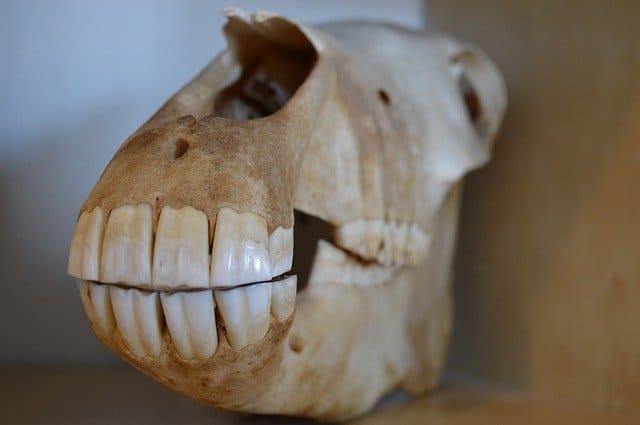
However, if the Wolf teeth remain when it comes to breaking and training phase of the horse’s life, it is best practice to have them removed as they often cause problems with bitting for the horse, which may lead on to long standing behavioural issues if not picked up by the trainer.
Ageing a Horse up to the Age of 5 years of Age Is Quite Reliable.
When aging younger horses up to the age of 5 years, you can really hone your skills and become very accurate. The horse in his younger years is growing and developing and therefore the progress of the appearance and growth of his teeth will reflect this, which gives the Equestrian very reliable landmarks to work from.
The Foals Teeth at Birth to 1 year.
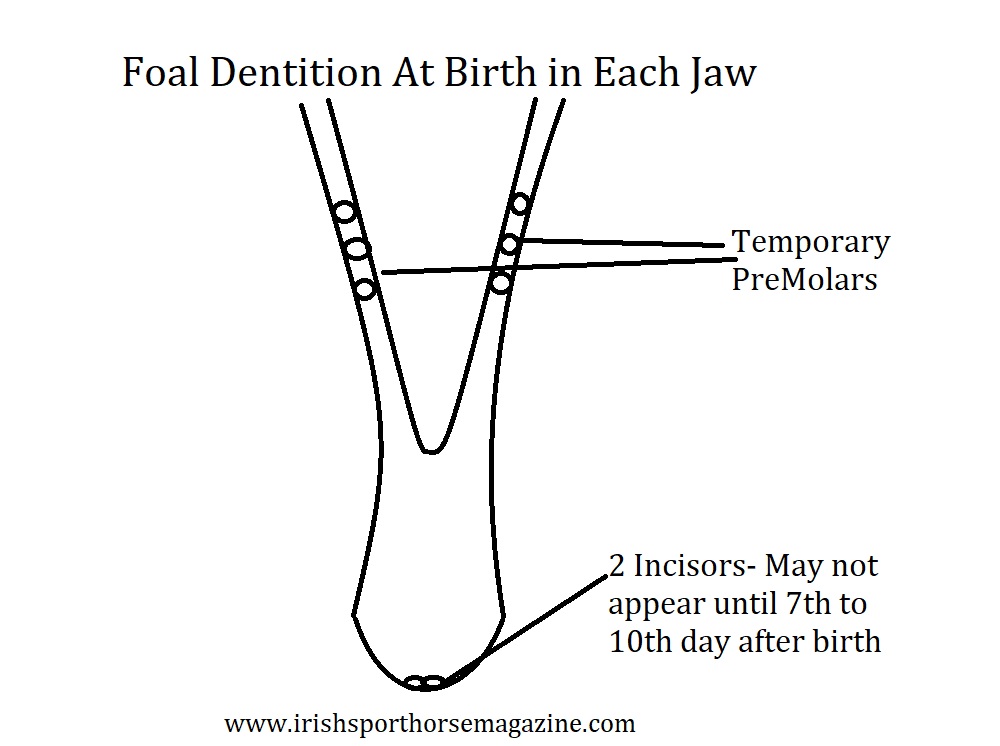
The foal at birth has 6 premolars in each jaw, and 2 incisors. However, the incisors may not appear until the 7th or 10th day after birth. By 4 weeks old they have 4 Incisors in each jaw and from 9months old to 1 year old, all 12 Milk Teeth Incisors are present (6 in each jaw) and the 1st of their permanent molar teeth appear.
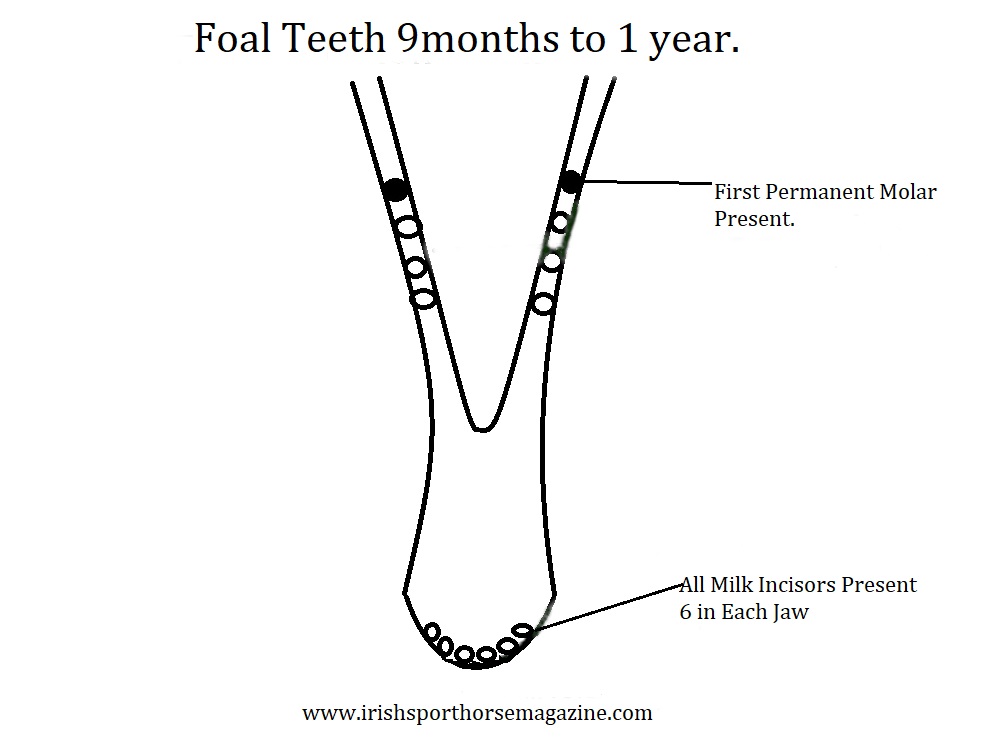
The Horse’s Teeth at 2 ½ Years Old.
By the time the horse is 2 ½ years old, their first permanent incisor teeth will appear in each jaw, The Central Incisors. Plus 4 of 6 Premolars will be replaced by their permanent counterparts, while 4 of the permanent Molars will now be present in each jaw.
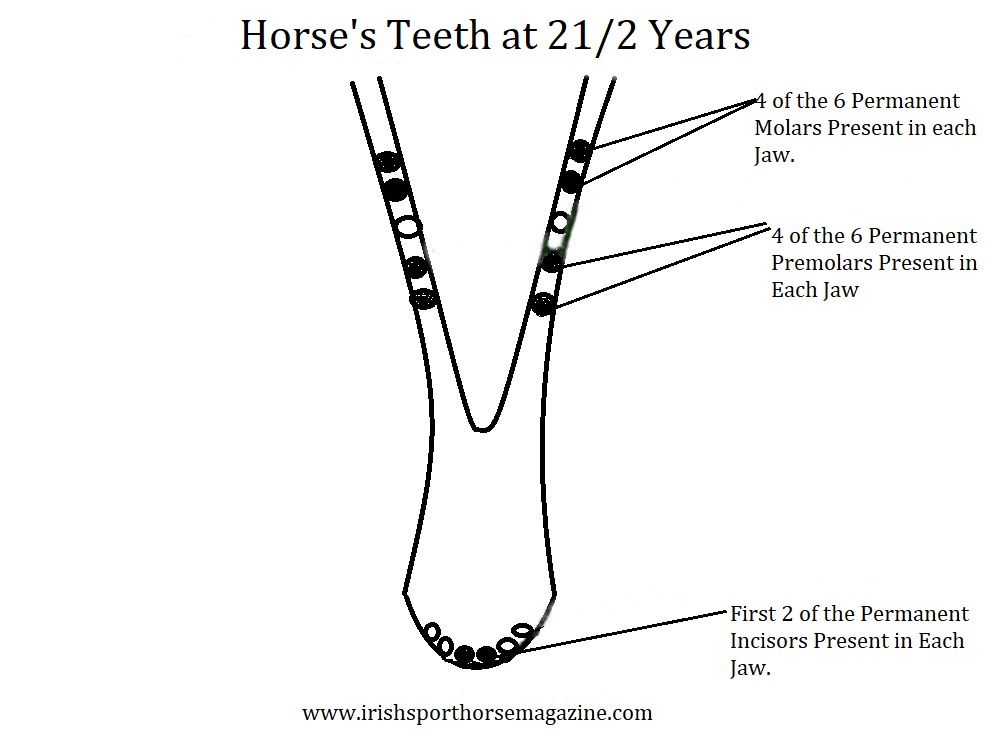
The Horse’s Teeth at 3 ½ years Old.
When the horse reaches 3 ½ years, 4 of the 6 permanent Incisors have erupted in each jaw, while all of the Milk Premolars have now been replaced by permanent teeth. The horse still only has 4 of the permanent Molars Present in each jaw.
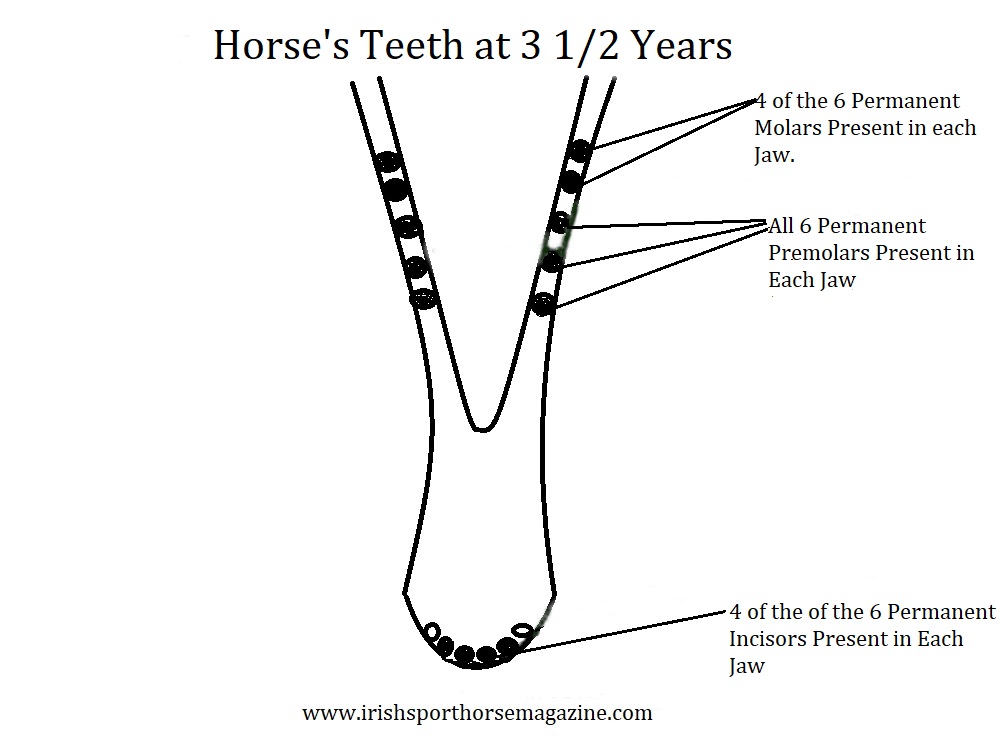
The Horse’s Teeth at 4 ½ Years Old
When the Horse Reaches 4 ½ Years their permanent dentition approaches completion. All 6 permanent Incisors are present in each jaw, along with all 6 Premolars and 6 Molars. At about this age the Tushes will begin to erupt, 2 in each jaw. Tushes are normally only present in the Male, but occasionally develop in some mares.
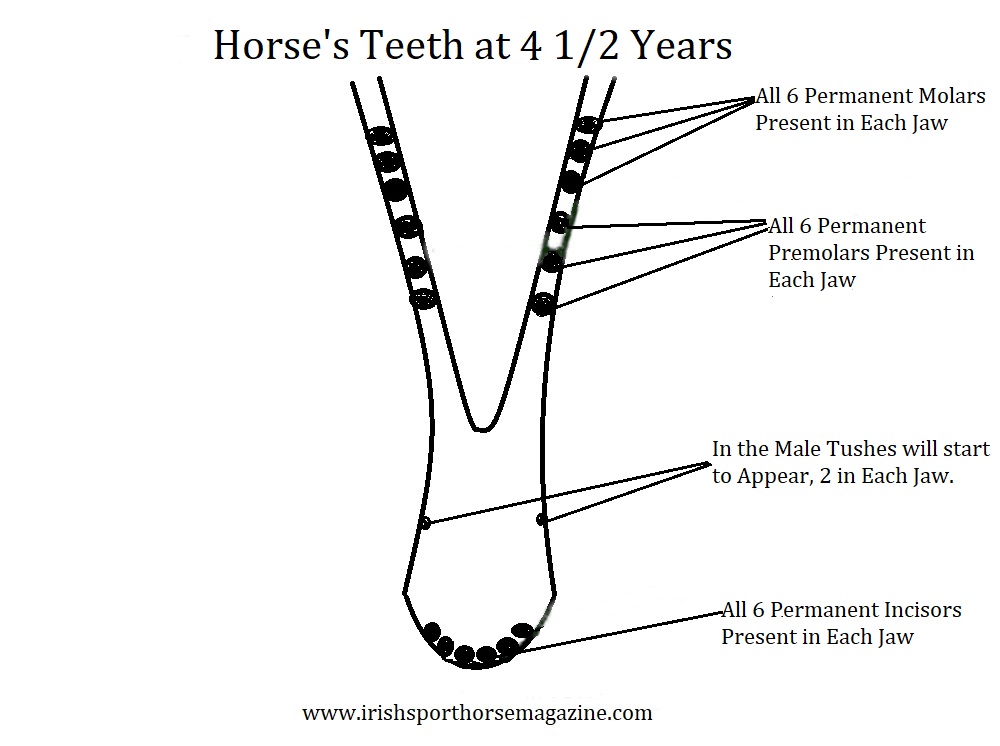
Ageing the Horse.
Normally Ageing the horse is done by looking at the Incisors. As previously mentioned up to 5 years or so, this can be done very accurately. Also as the horse ages the incisors change in angle, along with the shape of the teeth. This is due to the fact that the horse has Hypsodont Teeth, that is teeth with enamel that extends well below the gum line, this is due to the fact the as the horse ages, his teeth are used to eat tough vegetation and therefore they wear considerably and as they wear more tooth is replaced by being pushed through the gum into use. It is said that once the permanent teeth of the horse erupt, they can continue to grow for a further 14 years. See the Diagram below showing the Cross section of one of the horse’s incisors, and the changing shape of the tooth as the animal ages. As the incisor teeth are pushed through the gum, the wear surface called the table, will not only change in shape, but the marks present on the surface will also change as the horse ages, giving the equestrian another landmark for ageing the horse.
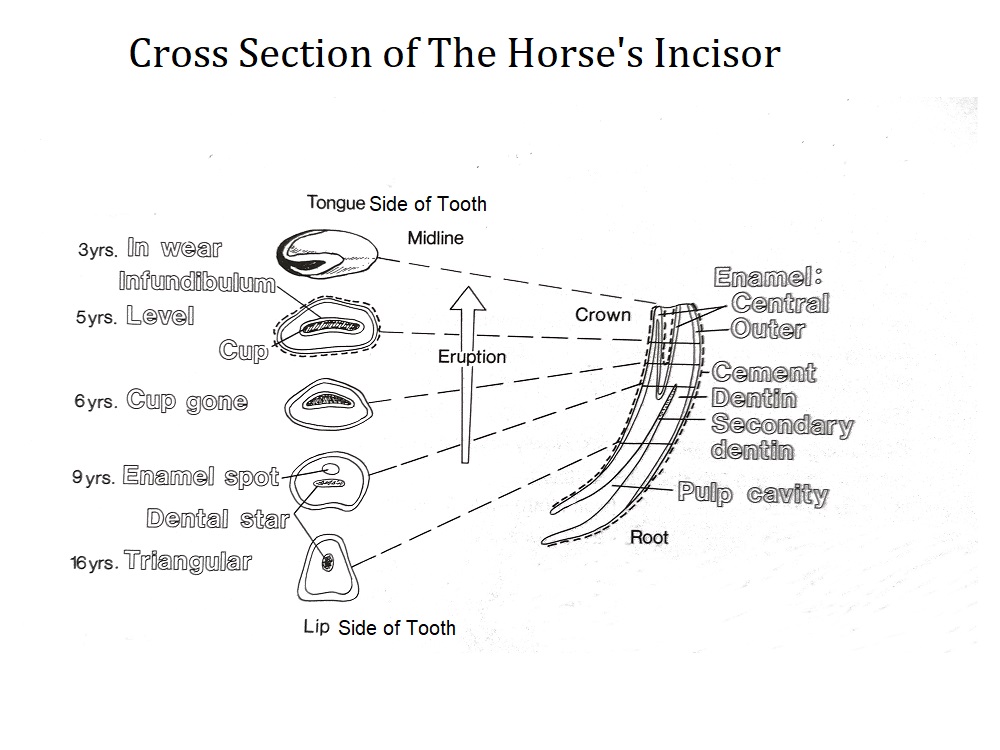
Examining The Horse’s Incisors for the Purpose of Ageing.
Foal – up to 4 weeks
Two Central Incisors in Each Jaw
Foal 4 to 6 Weeks
There are 4 Incisors Present in Each Jaw – Central with the Lateral Incisors just appearing.
9 Month Foal to Yearling
There are 6 Incisors Present in Each Jaw – These are the Milk or Deciduous Teeth, both the Central and Lateral Incisors are in Wear, and the Corner Incisors are recently appeared.
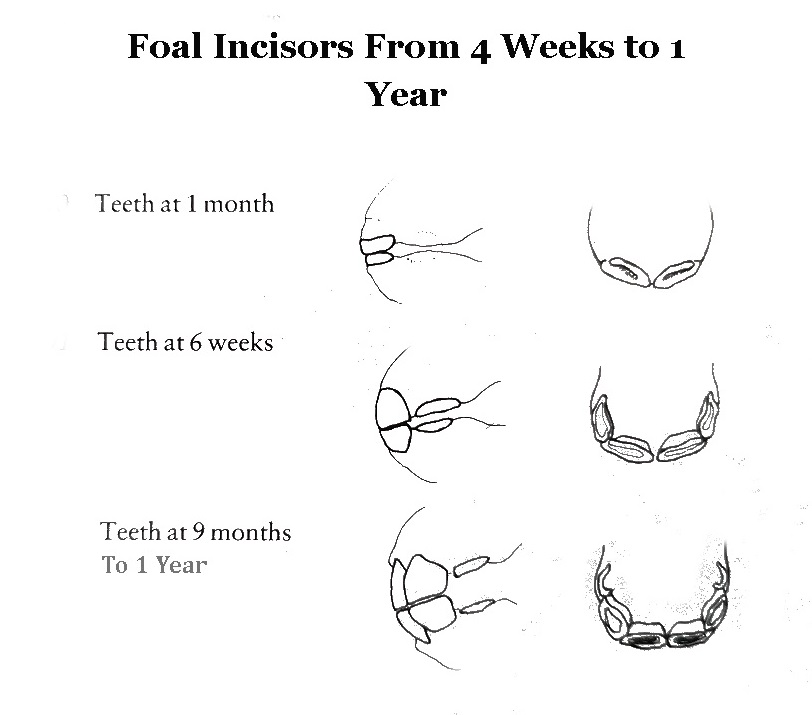
2 Year Old & 2 ½ Year Old Horse
In the 2 year old all 6 Incisor Milk Teeth are in wear, by2 ½ years the Central Incisors will be replaced by permanent teeth.
3 Year Old & 3 ½ Year Old Horse
In the 3 year old, the Central incisor permanent teeth are in wear, by 3 ½ the lateral Incisors are appearing.
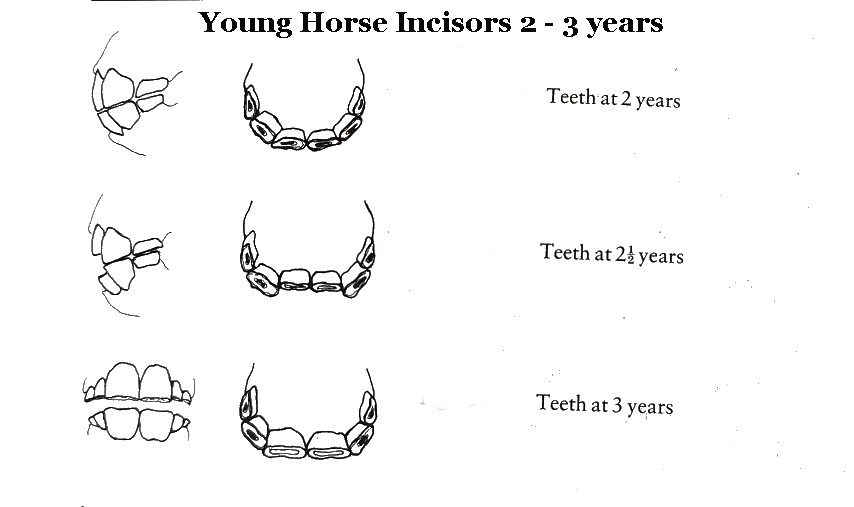
4 year old & 4 ½ Year Old Horse
The Central and Lateral Incisors will be in wear, and the permanent corner incisors will be appearing. Also at 4 ½ with geldings or stallions, the tushes or canines will begin to emerge.
5 to 6 years.
All the Incisors are in wear and the tushes should all be present. The shapes of the tables, (i.e. the flat wear surface of the incisors) in the younger horse are oval, with a central dark oval area known as the cup present in all incisors.
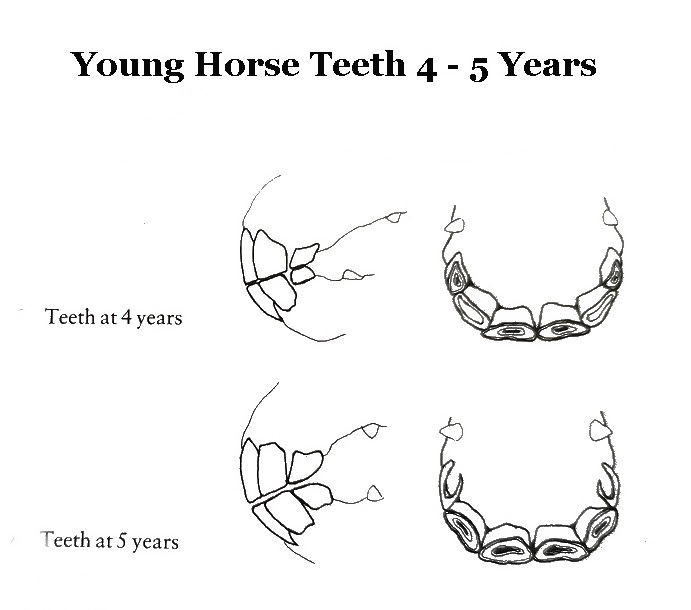
7 years
At 7 years, the upper corner incisors as they wear will develop a hook, known as the 7 year hook. All the tables will still be largely oval in shape with the oval cup depression present in all incisors.
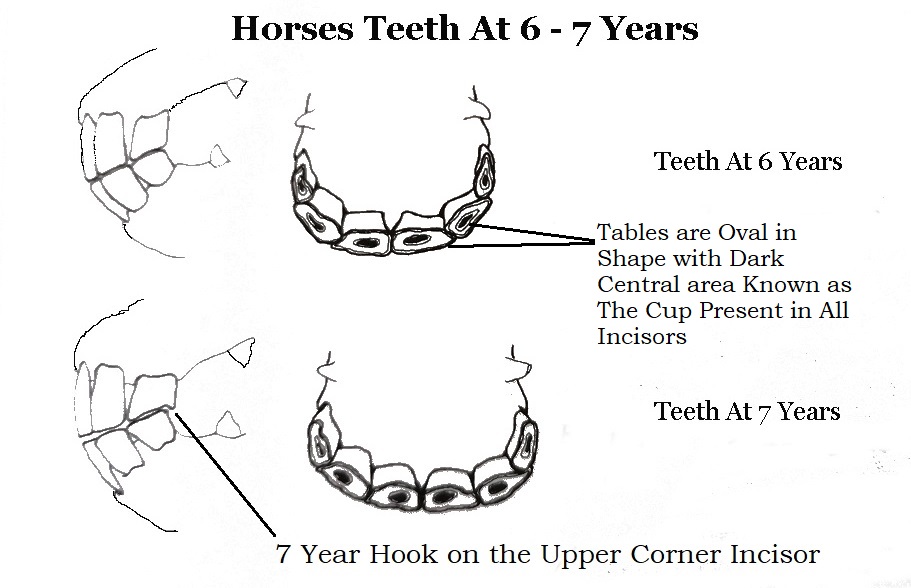
8 years to 9 years
At 8 years the 7 year hook, has almost completely disappeared. The shape of the teeth are changing slightly, they will not be the regular oval shape and will begin to become more triangular. Also the cup area in the central and lateral incisors has changed, showing the dental star as a line, and the enamel spot as a dot just behind it. By 9 years the corner incisors are also showing the dental star and enamel spot.
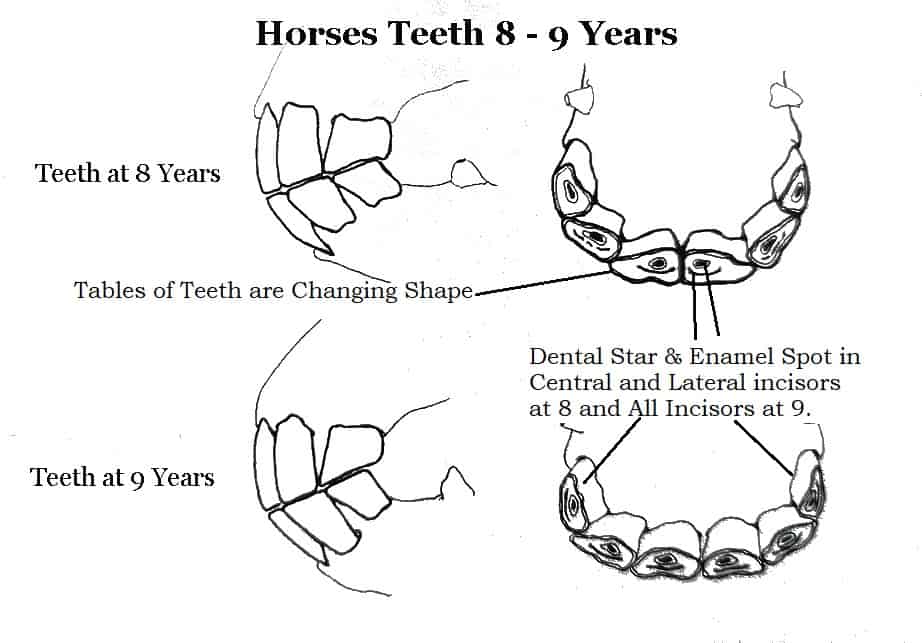
10 years
At 10 years the Galvayne’s Groove is just beginning to appear in the middle of the outer wall of the top corner incisors, see the diagram. The shape of the teeth will continue to become more triangular; also at 10 the angle of the Bite will begin to change, while the dental star and enamel spot will be present in all the incisors.
15 years
At 15, the Galvayne groove will be now half way down the upper corner incisor. All of the incisors will largely be triangular in shape and the angle of the bite will be more acute. The enamel spot will have disappeared in all incisors, and the dental star will remain now as a dark spot.
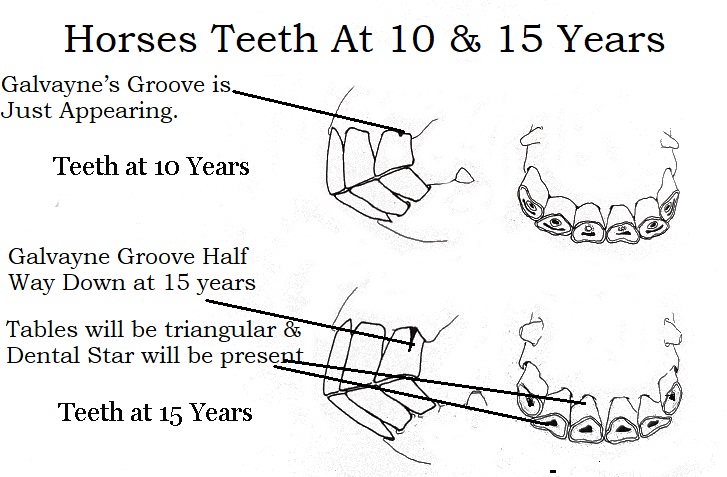
20 years up
At 20 years the Galvayne Groove will be present the length of the lateral corner incisor. The shape of the incisor teeth will be changing from triangular to a more circular shape as the horse ages as the angle of horses bite continues to become more acute. The Dental star will still be present in all incisors. By the age of 25 the Galvayne Groove has disappeared from the top half of the corner incisor, and by 30 years of age is has disappeared completely.
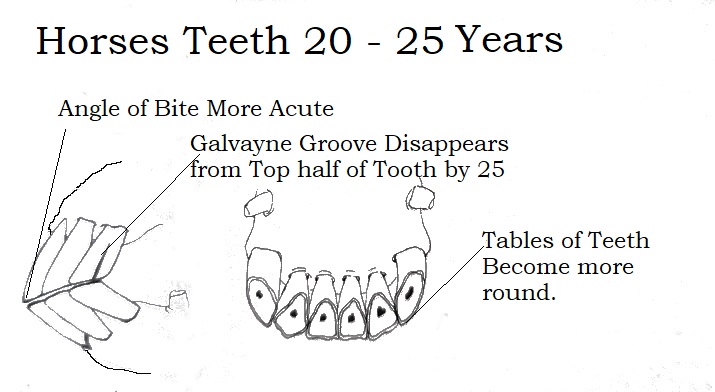
A Good Rule of Thumb for Ageing a Horse.
A good rule of thumb to remember as the horse ages is that the shape of the tables of his teeth will change from oval, to triangular, to circular in the very old horse. Plus in the older horse the angle of the bite will be more acute. These points, plus the Galvayne’s Groove, can give you a good indication of the age of the more mature horse. The only thing left for you to do is to start checking as many horses’ teeth as possible, and the more horses you check while keeping this guide in mind, the better you will become at aging horses by their teeth.
This Article was originally published in the February 2021 Issue of Irish Sport Horse Magazine.
